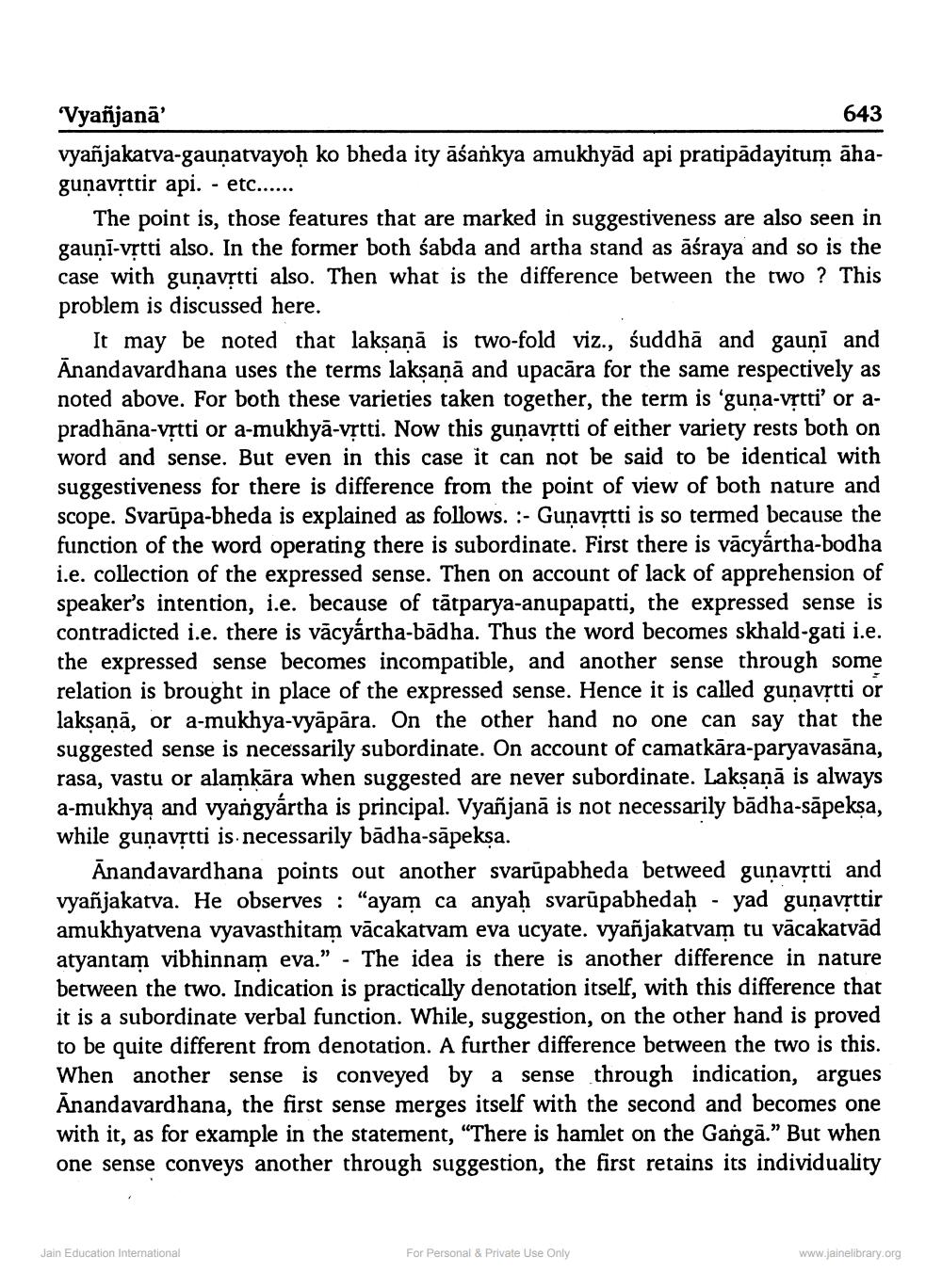________________
Vyañjanā
643 vyañjakatva-gaunatvayoh ko bheda ity āśankya amukhyād api pratipadayitum āhagunavșttir api. - etc......
The point is, those features that are marked in suggestiveness are also seen in gauni-vrtti also. In the former both sabda and artha stand as aśraya and so is the case with gunavrtti also. Then what is the difference between the two ? This problem is discussed here.
It may be noted that laksaņā is two-fold viz., suddhā and gauni and Anandavardhana uses the terms laksana and upacara for the same respectively as noted above. For both these varieties taken together, the term is 'guna-vrtti' or apradhāna-vrtti or a-mukhyā-vrtti. Now this gunavrtti of either variety rests both on word and sense. But even in this case it can not be said to be identical with suggestiveness for there is difference from the point of view of both nature and scope. Svarūpa-bheda is explained as follows. :-Gunavrtti is so termed because the function of the word operating there is subordinate. First there is rtha-bodha i.e. collection of the expressed sense. Then on account of lack of apprehension of speaker's intention, i.e. because of tātparya-anupapatti, the expressed sense is contradicted i.e. there is vācyártha-bādha. Thus the word becomes skhald-gati i.e. the expressed sense becomes incompatible, and another sense through some relation is brought in place of the expressed sense. Hence it is called gunavștti or laksanā, or a-mukhya-vyāpāra. On the other hand no one can say that the suggested sense is necessarily subordinate. On account of camatkāra-paryavasāna, rasa, vastu or alamkāra when suggested are never subordinate. Lakşaņā is always a-mukhyą and vyangyártha is principal. Vyañjanā is not necessarily bādha-sāpeksa, while guņavstti is necessarily bādha-sāpekṣa.
Anandavardhana points out another svarūpabheda betweed gunavștti and vyañjakatva. He observes : "ayam ca anyaḥ svarūpabhedaḥ - yad guņavsttir amukhyatvena vyavasthitam vācakatvam eva ucyate. vyañjakatvam tu vācakatvād atyantam vibhinnam eva.” - The idea is there is another difference in nature between the two. Indication is practically denotation itself, with this difference that it is a subordinate verbal function. While, suggestion, on the other hand is proved to be quite different from denotation. A further difference between the two is this. When another sense is conveyed by a sense through indication, argues Anandavardhana, the first sense merges itself with the second and becomes one with it, as for example in the statement, "There is hamlet on the Gangā.” But when one sense conveys another through suggestion, the first retains its individuality
Jain Education Interational
For Personal & Private Use Only
www.jainelibrary.org




